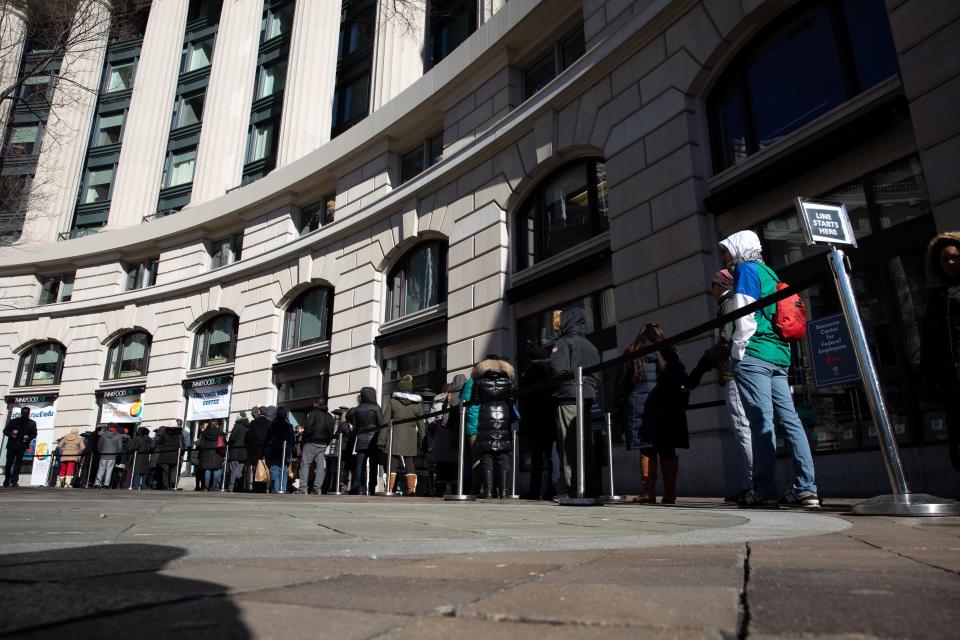What was the longest government shutdown in U.S. history?
- Oops!Something went wrong.Please try again later.
- Oops!Something went wrong.Please try again later.
The federal government neared its third shutdown in 10 years before House Speaker Kevin McCarthy helped broker a last-minute short-term deal Saturday to keep government open, mere hours before a midnight deadline.
The 45-day stopgap bill passed the House and Senate and will keep the federal government open through Nov. 17.
Prior to the deal, the possibility of a government shutdown raised questions about just how long a shutdown would last. The most recent shutdown, which stretched from Dec. 21, 2018 until Jan. 25, 2019, was also the longest in history, and forced hundreds of thousands of federal employees to be furloughed or work for weeks without pay.
Here's what happened in some of the lengthiest prior shutdowns:
The longest government shutdowns
Since 1976, when the current budget process was enacted, there have been 20 funding gaps lasting at least one full day, according to the Congressional Research Service.
Before the 1980s, it was common for the government to continue operating like normal when funding bills hadn't been passed, Glassman said. But in 1980 and 1981, Attorney General Benjamin Civiletti issued two opinions that said it was illegal for the government to spend money without congressional approval.
"Since then, there have been some funding gaps that have been relatively short — two or three days — and then there have been three long ones that are politically significant, all stimulated by Republicans," said Roy Meyers, political science professor emeritus at the University of Maryland, Baltimore County.
The 2018-2019 shutdown over Trump's border wall funding lasted 34 full days, making it the longest shutdown in U.S. history. Trump finally signed a bill to reopen the government without his demands being met.

Before that, the record was 21 days in 1995 and 1996, when President Bill Clinton refused to bend to steep spending cuts and tax reductions proposed by House Speaker Newt Gingrich. Public opinion was on Clinton's side and Republicans eventually caved, Meyers said.
There wasn't another shutdown until 2013, when Republicans used budget negotiations to try to defund the Affordable Care Act. With efforts to gut the new health care law backfiring, Republicans gave in and the government reopened after 16 days.
Senate Minority Leader Mitch McConnell acknowledged on Sept. 19 that public opinion has not sided with Republicans during previous shutdowns.
"I'm not a fan of government shutdowns," McConnell said. "I've seen a few of them over the years. They never have produced a policy change and they've always been a loser for Republicans politically."
How Taylor Swift could affect the 2024 election
Slovakian driver fined after traffic camera shows dog behind wheel of car
Rural California town with a rich history fights to preserve its heritage

